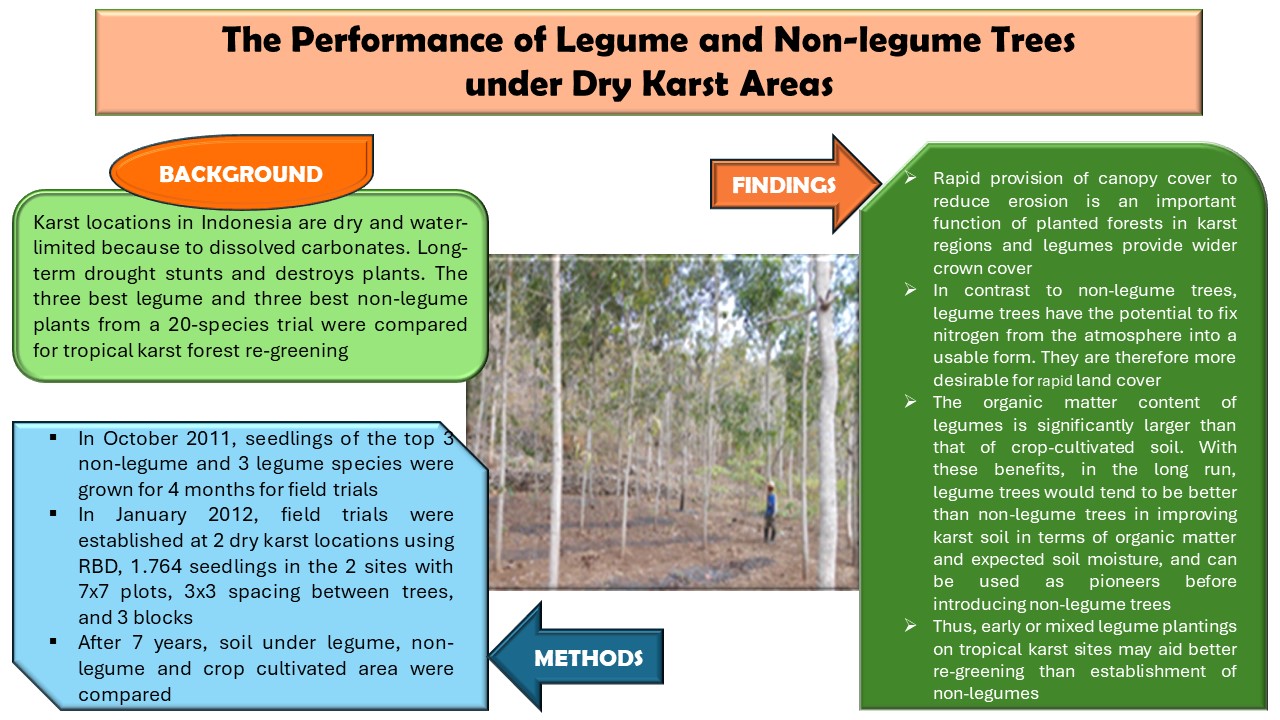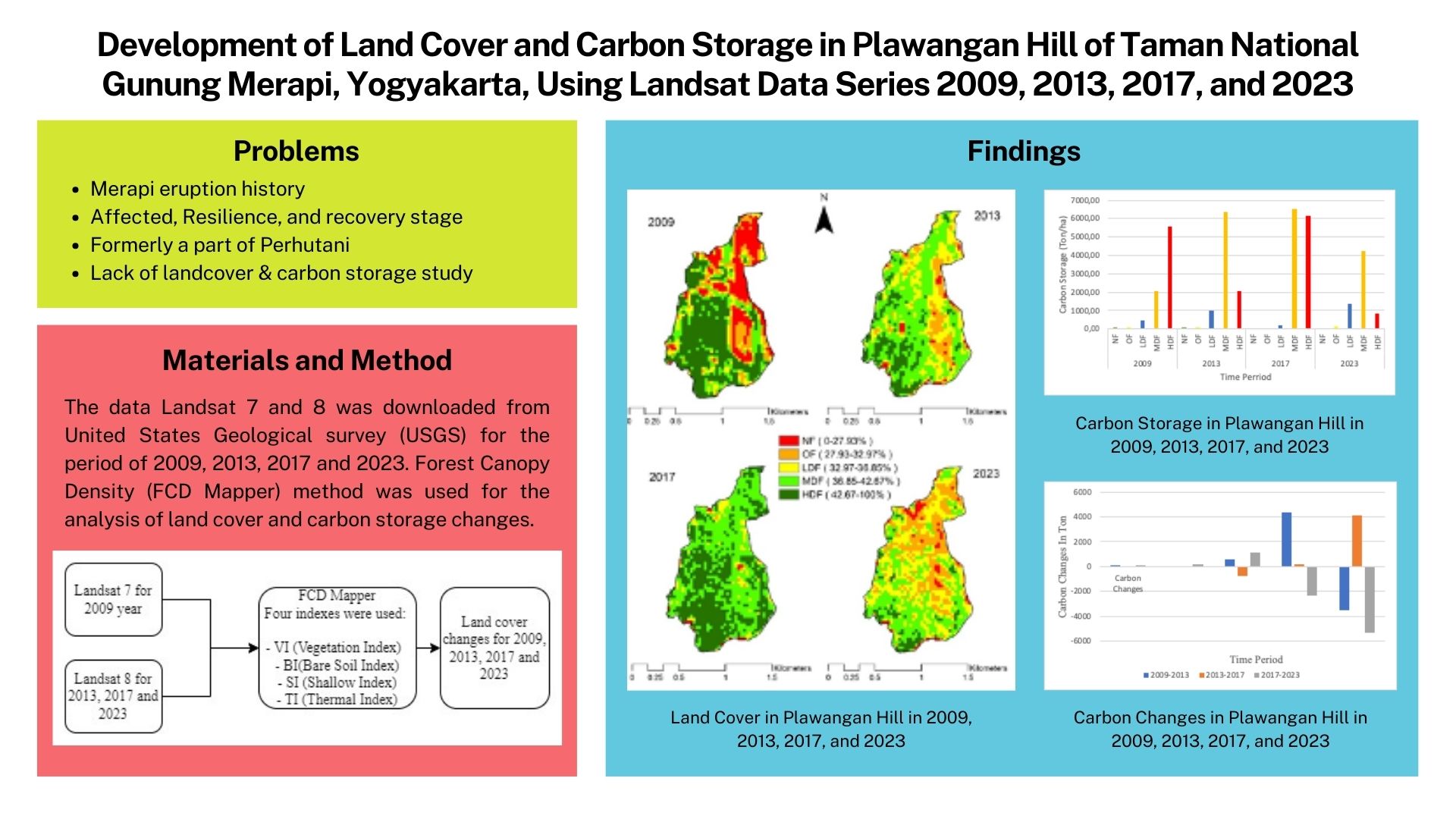Preliminary Stand Table for Average Dominant Trees of Jati Plus Perhutani in Saradan, Madiun, and Ngawi Forest Districs
Abstract
In order to realize sustainable teak forest management, the strategic plan of forest management is highly needed to establish the growth characteristics model of Jati Plus Perhutani (JPP). The most thing which cannot be ignored to estimate the growth and yield of teak is quantification of site quality differentiation. The objective of this study is to arrange and predict the properly yielded table of the average dominant trees of JPP in the forest management unit of Saradan, Madiun, and Ngawi. The trees sampling had been selected for the age of 6 to 12 years from the best compartment areas in JPP. Growth model and JPP's yield stands were predicted using growth parameters such as diameter (dbh), total height, clear bole height, volume, and growing space. Each parameter was analyzed using SPSS 20 statistical software to determine the best growth model that will then be used to predict the stand table parameters values. The equation was selected from the highest R2 value or the value which is approaching to 1, with low standard error estimation (SEE). The result shows that best equation model to estimate the growth from tree parameters on medium site of JPP are dominated by S model and the best model for bole height is growth model. The data were taken from an initial observation as a preliminary study, further research is expected to enhance the results of current research to obtain the stand table which can be applied in the future.
Authors
RahmadwiatiR., SadonoR., & SupriyatnoN. (2016). Preliminary Stand Table for Average Dominant Trees of Jati Plus Perhutani in Saradan, Madiun, and Ngawi Forest Districs. Jurnal Manajemen Hutan Tropika, 22(1), 57. https://doi.org/10.7226/jtfm.22.1.57

This work is licensed under a Creative Commons Attribution 4.0 International License.
Jurnal Manajemen Hutan Tropika is an open access journal which means that all contents is freely available without charge to the user or his/her institution. Users are allowed to read, download, copy, distribute, print, search, or link to the full texts of the articles in this journal without asking prior permission from the publisher or the author. This is in accordance with the Budapest Open Access Initiative (BOAI) definition of open access.








